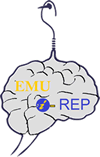JavaScript is disabled for your browser. Some features of this site may not work without it.
| dc.contributor.advisor | Korhan, Orhan (Supervisor) | |
| dc.contributor.author | Elghomati, Ali S. Milad | |
| dc.date.accessioned | 2024-10-08T05:14:43Z | |
| dc.date.available | 2024-10-08T05:14:43Z | |
| dc.date.issued | 2022-08 | |
| dc.date.submitted | 2022-08 | |
| dc.identifier.citation | Elghomati, Ali S. Milad. (2022). The Impact of Mobile Touch Screen Device Use on Musculoskeletal Disorder: Risk Assessment Modeling and Verification. Thesis (M.S.), Eastern Mediterranean University, Institute of Graduate Studies and Research, Dept. of Industrial Engineering, Famagusta: North Cyprus. | en_US |
| dc.identifier.uri | http://hdl.handle.net/11129/6157 | |
| dc.description | Doctor of Philosophy in Industrial Engineering. Institute of Graduate Studies and Research. Thesis (Ph.D.) - Eastern Mediterranean University, Faculty of Engineering, Dept. of Industrial Engineering, 2022. Supervisor: Prof. Dr. Orhan Korhan. | en_US |
| dc.description.abstract | Background. Touch screen interface is a technology that is applied to almost all mobile devices. Their intensive and repetitive touch screen may pose a significant problem, which creates ergonomic pains on musculoskeletal disorders. Purpose. This research aims to study the impact of using Mobile Touch Screen Devices (MTSDs) on the human musculoskeletal system and assess the pain interference with the ability to work. Methods. Cornell musculoskeletal discomfort questionnaire was given to 544 participants (71% males and 29% females) at the Eastern Mediterranean University. Association rules mining technique is applied to illustrate the correlation and logistic regression to identify the significant risk factors. Subsequently, the sample data was tested using five different machine learning models; the support vector machine, the long-short-term memory neural, the back-propagation, radial basis function and the ensemble bagged tree to offer predictive accuracy. Results. Most musculoskeletal disorders were reported in the neck region and lower back (64.3% and 55.3%) respectively, followed by upper back (44.3%), and the right shoulder (37.5%). Analysis of association rules showed positive correlation between the lower back and the neck (support = 44%, confidence = 77%). The discomforts were at the neck, shoulders, upper and lower back. The findings reveal that both sitting and behind a desk performing a task while sitting result in significant risk factors of physical discomfort. Additionally, the results found that the results found that the ensemble bagged tree has the highest accuracy in prediction. The ensemble bagged tree achieved the highest scores of all of the metrics (91%, 94.3 %, 96.1%, and 95.2% for accuracy, macro-precision, macro-recall, and macro-averaged F1-score) and outperformed other models. Conclusions. The ensemble bagged tree predicted the interference of the pain in the muscle performance ability for the users. Moreover, the discomfort level was the highest in the neck and lower back areas. | en_US |
| dc.description.abstract | ÖZ: Arka fon. Dokunmatik ekran arayüzü, hemen hemen tüm mobil cihazlara uygulanan bir teknolojidir. Yoğun ve tekrarlayan dokunmatik ekranları, kas-iskelet sistemi rahatsızlıklarında ergonomik ağrılar yaratan önemli bir sorun oluşturabilir. Amaç. Bu araştırma, Mobil Dokunmatik Ekran Cihazlarının (MTSD'ler) insan kas-iskelet sistemi üzerindeki etkisini incelemeyi ve çalışma yeteneği ile ağrı etkileşimini değerlendirmeyi amaçlamaktadır. Yöntemler. Doğu Akdeniz Üniversitesi'nde 544 katılımcıya (%71 erkek ve %29 kadın) Cornell kas-iskelet rahatsızlık anketi uygulandı. Önemli risk faktörlerini belirlemek için korelasyon ve lojistik regresyonu göstermek için birliktelik kuralları madenciliği tekniği uygulanır. Ardından, örnek veriler beş farklı makine öğrenimi modeli kullanılarak test edildi; destek vektör makinesi, uzun kısa süreli bellek siniri, geri yayılım, radyal temel işlevi ve tahmin doğruluğu sunmak için topluluk torbalı ağaç. Sonuçlar. En çok kas-iskelet sistemi rahatsızlıkları boyun bölgesinde ve alt sırtta (%64.3 ve %55.3) rapor edilmiştir, bunu sırt üstü (%44,3) ve sağ omuz (%37.5) izlemiştir. Birliktelik kurallarının analizi, alt sırt ve boyun arasında pozitif korelasyon gösterdi (destek = %44, güven = %77). Rahatsızlıklar boyun, omuzlar, üst ve alt sırttaydı. Bulgular, hem oturmanın hem de masanın arkasında otururken bir görevi yerine getirmenin fiziksel rahatsızlık için önemli risk faktörleriyle sonuçlandığını ortaya koymaktadır. Ek olarak, sonuçlar, toplu torbalı ağacın tahminde en yüksek doğruluğa sahip olduğunu bulmuştur. Toplu torbalı ağaç, tüm metriklerin en yüksek puanlarını elde etti (%91, %94.3, %96.1 ve doğruluk, makro-hassasiyet, makro-hatırlama ve makro-ortalamalı F1 puanı için) ve diğer modellerden daha iyi performans gösterdi. Sonuçlar. Topluluk torbalı ağaç, ağrının kullanıcılar için kas performans kabiliyetine müdahalesini öngördü. Ayrıca rahatsızlık düzeyi en yüksek boyun ve bel bölgesindeydi. | en_US |
| dc.publisher | Eastern Mediterranean University (EMU) - Doğu Akdeniz Üniversitesi (DAÜ) | en_US |
| dc.rights | info:eu-repo/semantics/openAccess | en_US |
| dc.subject | Industrial Engineering Department | en_US |
| dc.subject | Human and Ergonomics Machine Systems--Ergonomics | en_US |
| dc.subject | Tablet Computer, Musculoskeletal | en_US |
| dc.subject | Association rules; musculoskeletal disorders; risk assessment modeling; radial basis function; touch screen | en_US |
| dc.title | The Impact of Mobile Touch Screen Device Use on Musculoskeletal Disorder: Risk Assessment Modeling and Verification | en_US |
| dc.type | doctoralThesis | en_US |
| dc.contributor.department | Eastern Mediterranean University, Faculty of Engineering, Dept. of Industrial Engineering | en_US |









